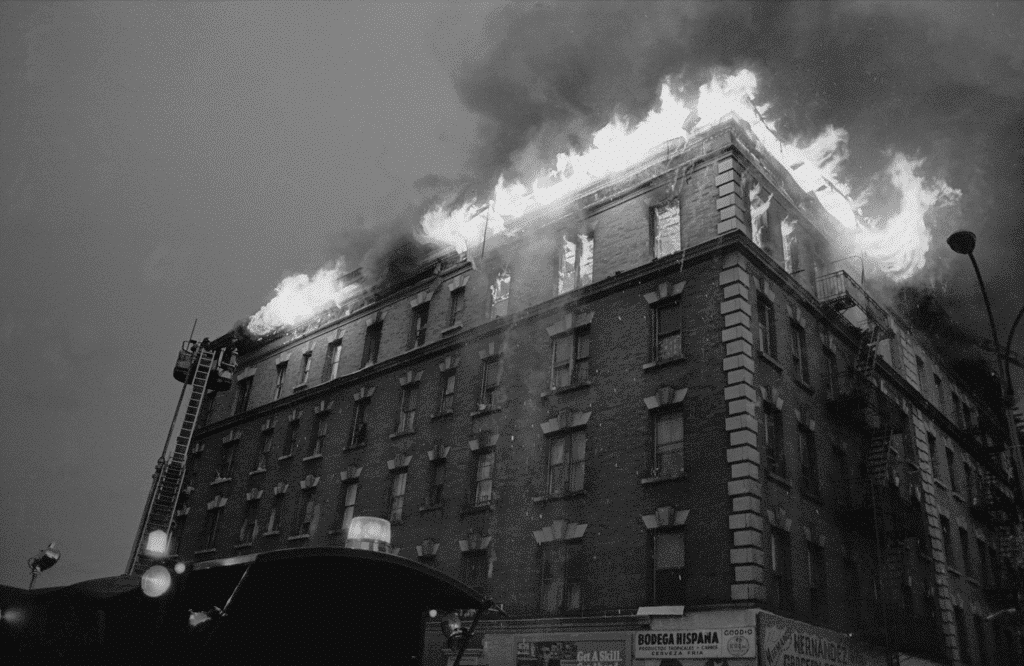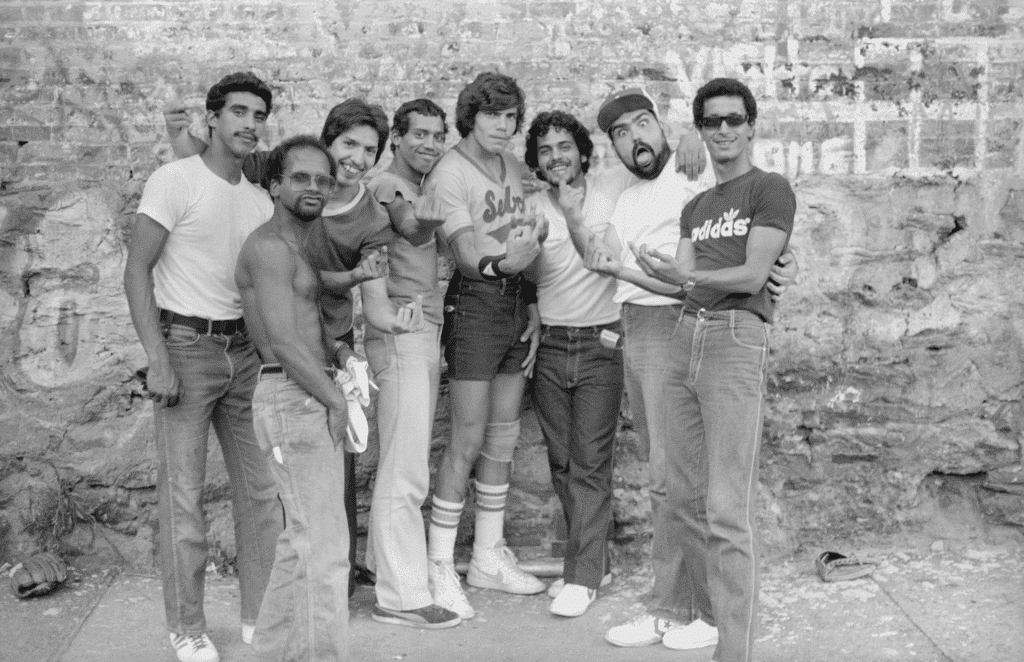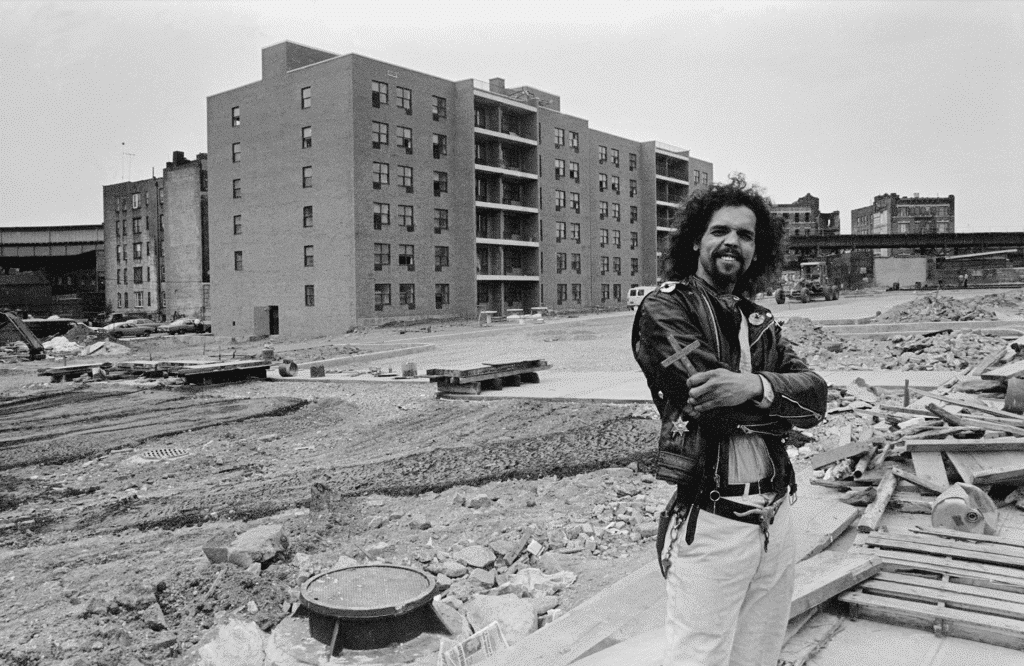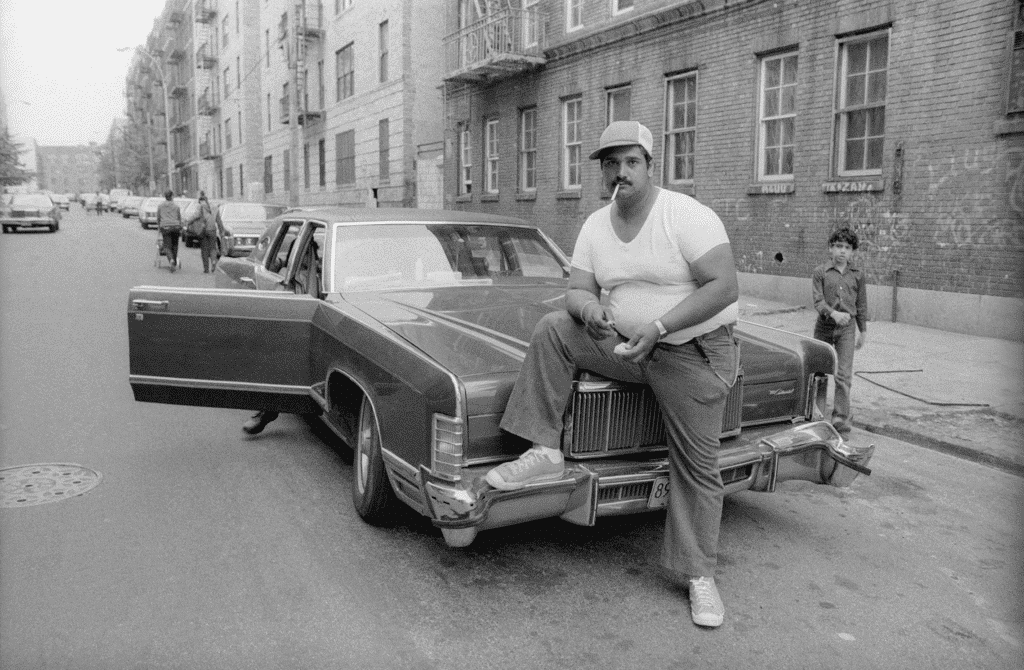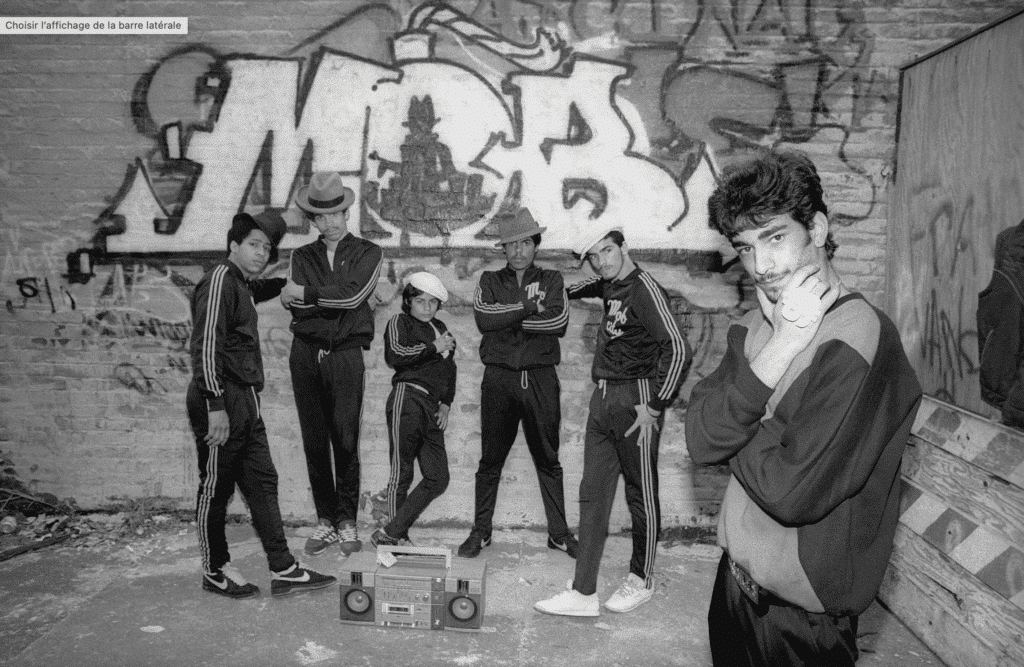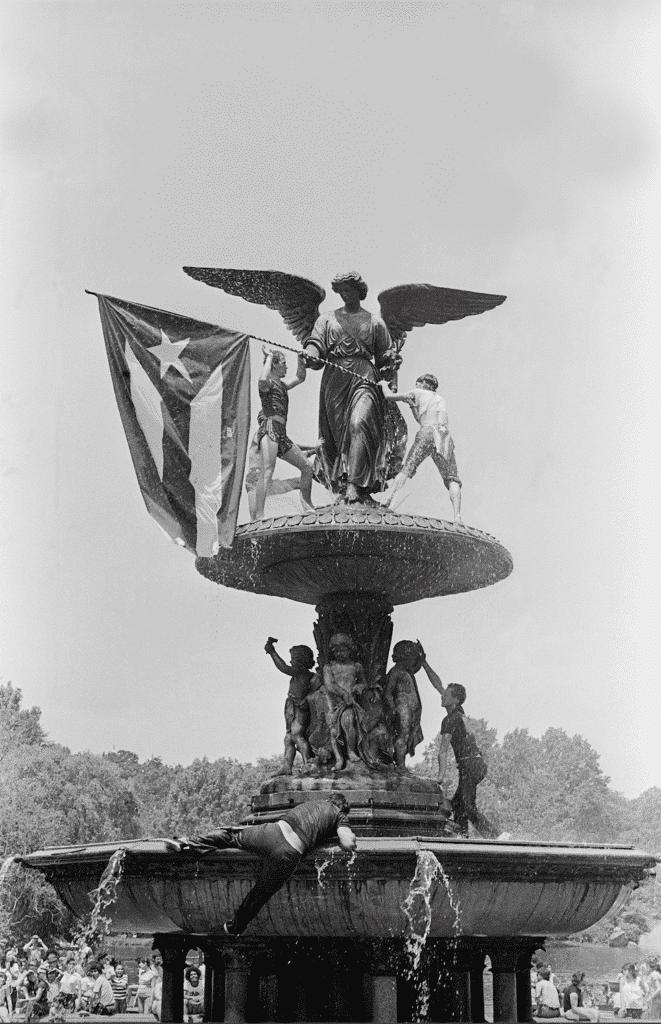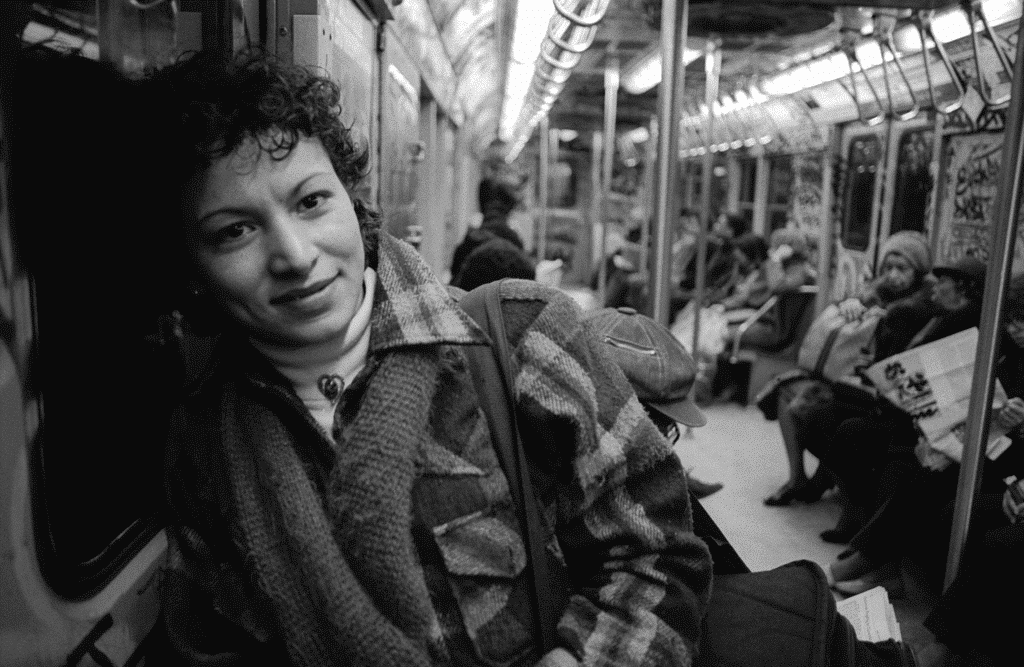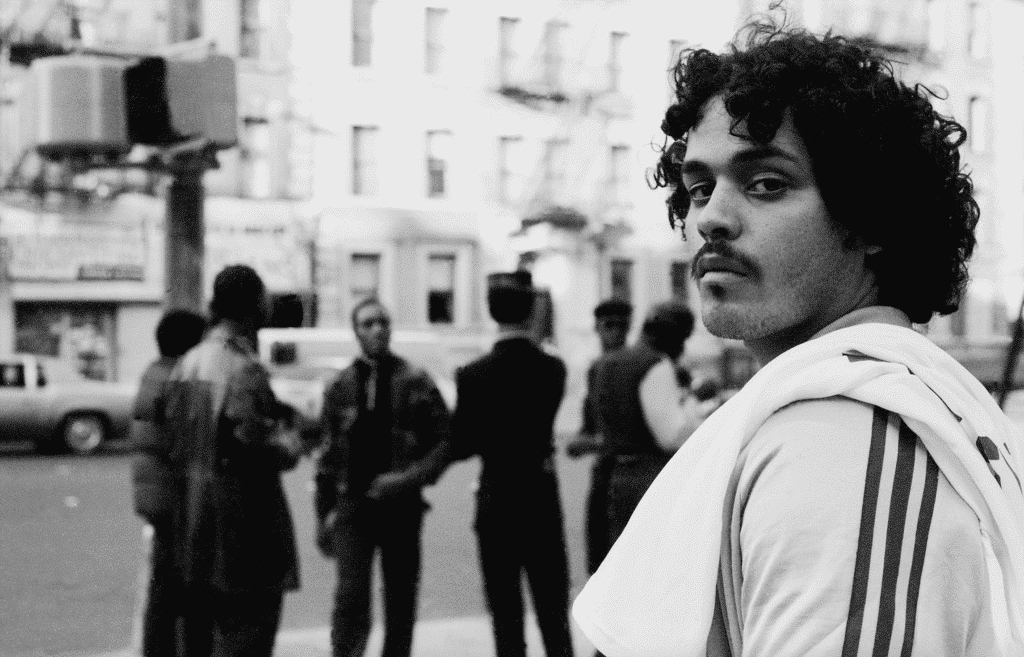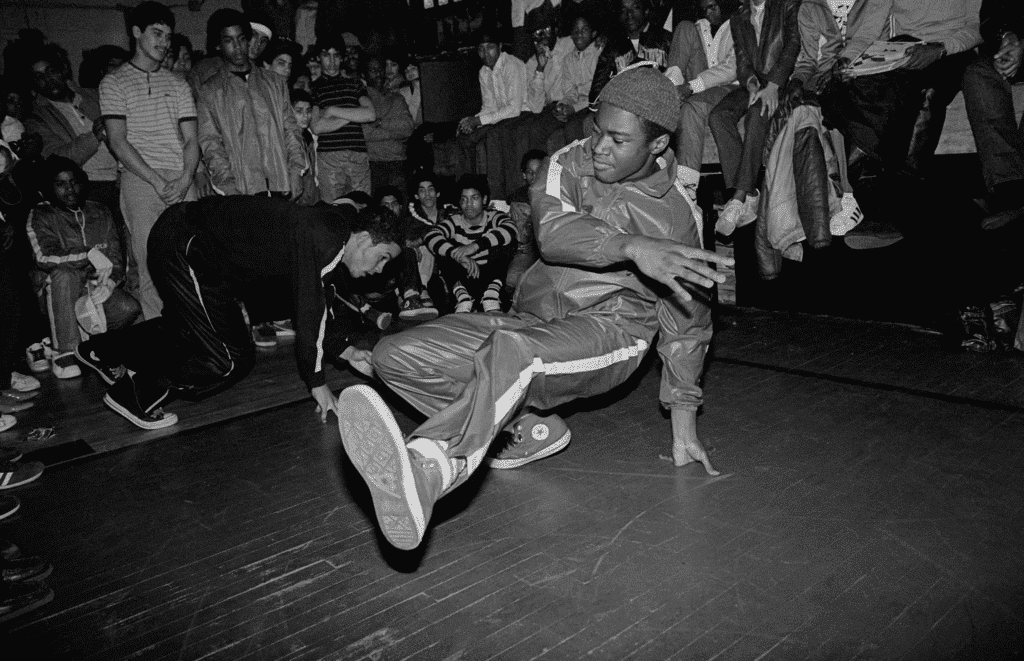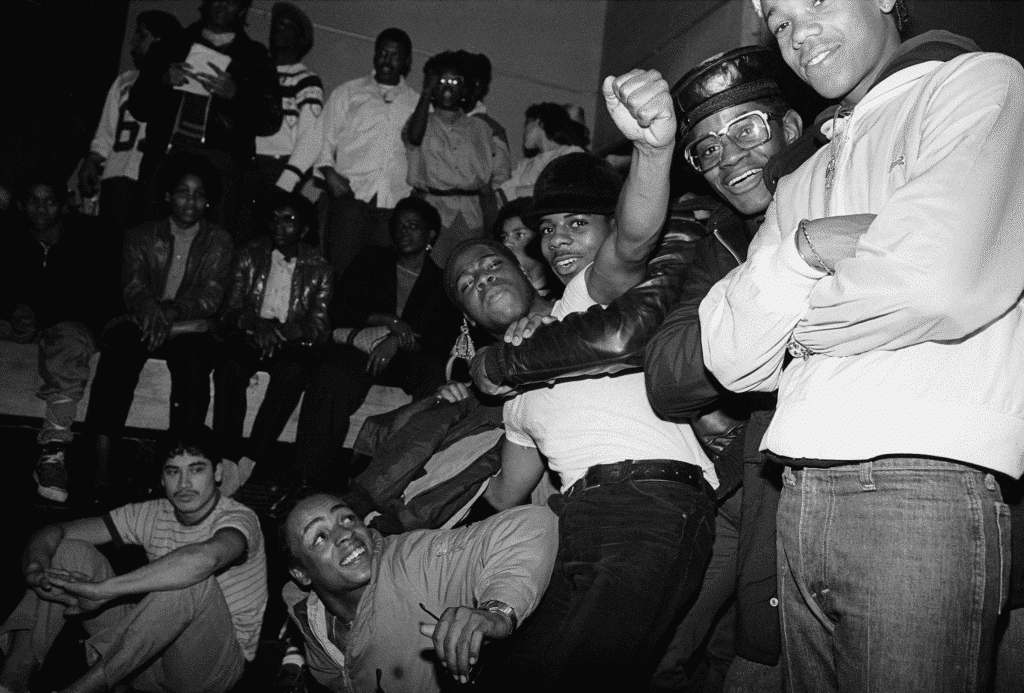“When I first moved to the Longwood section of the Bronx, the neighborhood was vibrant, and filled with people. In the summer months, everyone was out on the street hanging out. Folks playing dominoes, kids playing in the hydrant, girls skipping rope or playing jacks, boys playing skelzies. Music seemed to fill the air whether from the radio or drum circles by Puerto Rican men with singing in call and response. For a young boy like me, it had a sense of wonder and adventure when I ran down the stairs and hit the street.”
This is how photographer Ricky Flores describes his childhood growing up in the South Bronx in the 1960s, a neighborhood which would also see him grow up in the 1970s and 1980s. In the area, it was also a rough time, and violence was common. The presence of gangs, drugs and the crack epidemic, the razing of the neighborhood by landlords for profit with the complicity of the city, and AIDS all took their toll.
It was all brought to the forefront by the visits of President Carter in 1977, and then President Reagan in 1980, surrounded by devastated streets and burned-out buildings. The images were seared into the American people’s mind, to the point that many from outside of New York still see the South Bronx, and the Bronx in general, through these events.
The 1980s also represent the rise of rap, hip-hop, and break dancing. Music and dancing were very present in this neighborhood, and with this emergent street culture, it created a whole new scene. “The more I think about it, the more I can’t remember a single moment when music wasn’t around us. We consumed everything from Rock and Roll, Pop, Rhythm and Blues, Disco, Soul, Jazz, and Salsa, and at the center of all of it was the dance, always the dance. Whether at house parties, block parties, or at the beach. There would always be dancers and circles of people watching,” Ricky Flores recalls fondly. “The music at the time that had the most traction in our hood was that which was geared towards dancers. Disco and those long tracts were front and center during that time. For Puerto Ricans, salsa was adjacent to disco. Then those breaks began to gain traction for the breakers and we started hearing those extended breaks played by neighborhood DJs at block parties and the dance shifted to Rockers and floor work.”
Into this world came Flores and his camera. He had always been interested in photographs, and their ability to transport you to another place. His father had been a merchant marine and had an old photo of a Bedouin by a camel, which became one of Flores’ earliest memories associated with his father. Ricky was just 5 when his father passed away in 1966.
“At my 18th birthday, I received a small inheritance from my father and went to B&H and picked up my first 35mm camera, a Pentax K1000, that came with a 50mm 2.8 lens, a cheap flash, and a pleather carrying bag,” Flores recalls. “From there I spent a great deal of time at libraries and bookstores consuming everything I could find about operating a camera and how to print in a darkroom.”
Ricky Flores immediately began photographing everything around him, and since they were the closest, his friends and family became his first subjects. At first their response was bemused annoyance and complicity, but they eventually forgot that he would be photographing away while they were all hanging out in the neighborhood.
“As I developed as a progressive photographer the support by my neighborhood became active in a host of ways. It was in the South Bronx during the fire years, starting from the late 1960s through the 1980s. We knew that what was happening to our neighborhood was not typical and as we grew up together, we began to ask ourselves about our community’s future,” Flores recollects about his progress as a photographer. “My camera allowed me to ask questions, which were also developed from deep conversations with my friends. We became politically aware of what was happening, and I was actively encouraged and supported to seek answers.”
Ricky Flores eventually developed a career of covering race and police brutality in the Bronx as a freelance photographer, and was later hired as a full-time staff photographer by The Journal News, a publication covering the Lower Hudson Valley region. “It was then that my work began to transition from shooting the neighborhood to aggressive documentation and making connections to other social issues that had plagued our lives, social inequality, institutional racism, police brutality, homophobia, and AIDS. It was there that my life experience helped inform and make those links back to what was happening to us in the South Bronx.”
Flores’ work from this epoch is now all together in the book South Bronx Family Album. And it is a tome of the history of the neighborhood. At 11×14″, with 420 pages weighing 8 pounds without the custom box it comes in, and containing over 400 photographs, it is an object of beauty in and of itself. Its limited run of 500 hand numbered and signed copies makes it even more precious.
Here, the photographs create a very personal and intimate look into an often-maligned neighborhood during a key time in American history. Because of the size of the book, the photographs are large and easy to observe, predominantly black and white, with some color work as well. The printing is magnificent, letting the photographs be seen in the way they should be seen.
There is more though the deeper one looks. Outside of just the history are the fashions, the dance moves, and the general style of the people who called the Bronx neighborhood home. Flores’ stills of dance moves remind of images from the Olympics that took place in Paris last summer. The fashions might as well come back in greater force. It’s a style all its own, and ripe fruit for some designer or influencer to pick.
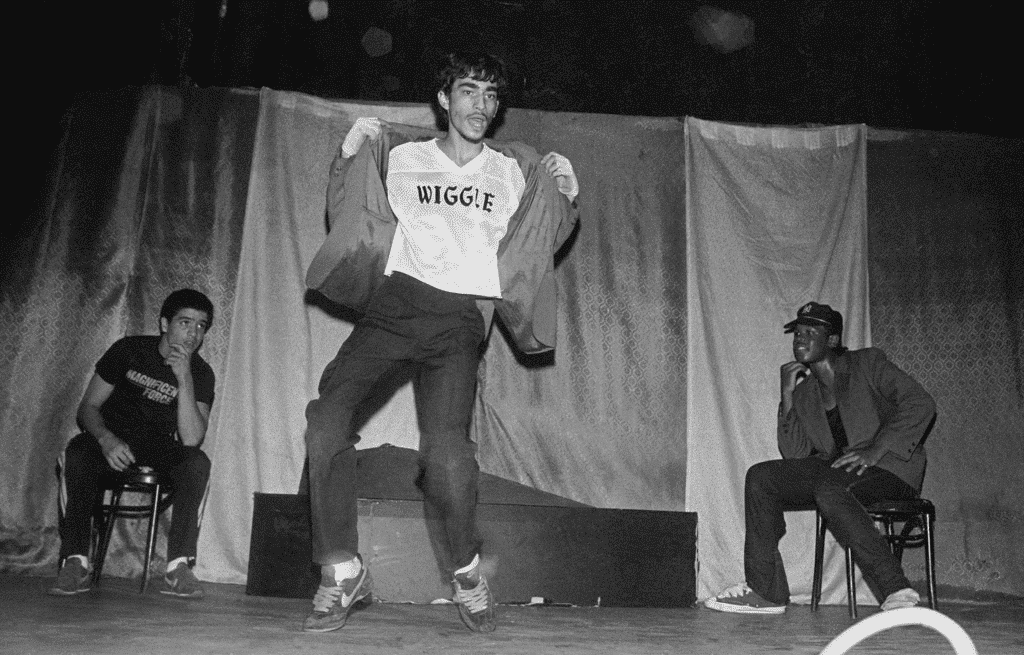
The groundwork for the book began after 9/11, when Flores began to sporadically post some of his photographs on Flickr, an early social media outlet targeted to photographers. As he posted, he began to organize them by subject. Online, the reactions to his photographs took him by surprise. More and more people began to gravitate to his page, and it stunned him how many people from all over the world had been impacted by the history of the Bronx and fascinated by that time period.
“The basic outline of the book was based on the initial segregation of images that I had put out on Flickr, but the sequencing, editing, and design choices were done by Debra Scherer and matched my intent for how the work should be seen,” Flores says. “The final product was Debra’s sheer will to make it happen with the deep respect and care she gave to the work. I think there are a host of publishers who might have done this book, but so few that I would trust with my work, and even fewer who would produce an 11×14, 420-page limited edition monograph with over 400 photos.”
What does Flores hope people take away from the book, and the photographs, of the South Bronx from an immense period of social, cultural, and racial change? “History,” he responds. “That history is not a dead thing, but a living breathing thing that connects us and informs our future. I think we tend to compartmentalize history to our detriment, and we continue to pay the price of doing so. It opens us up to repetition, misinformation, and distortions. For Puerto Ricans, Blacks, and Latinos it is far more insidious, it is a denial of our contributions to the world or relegates of as peripheral to history, here in the U.S. and around the world, and is left to a dominant class to tell it to their benefit and at our expense.”
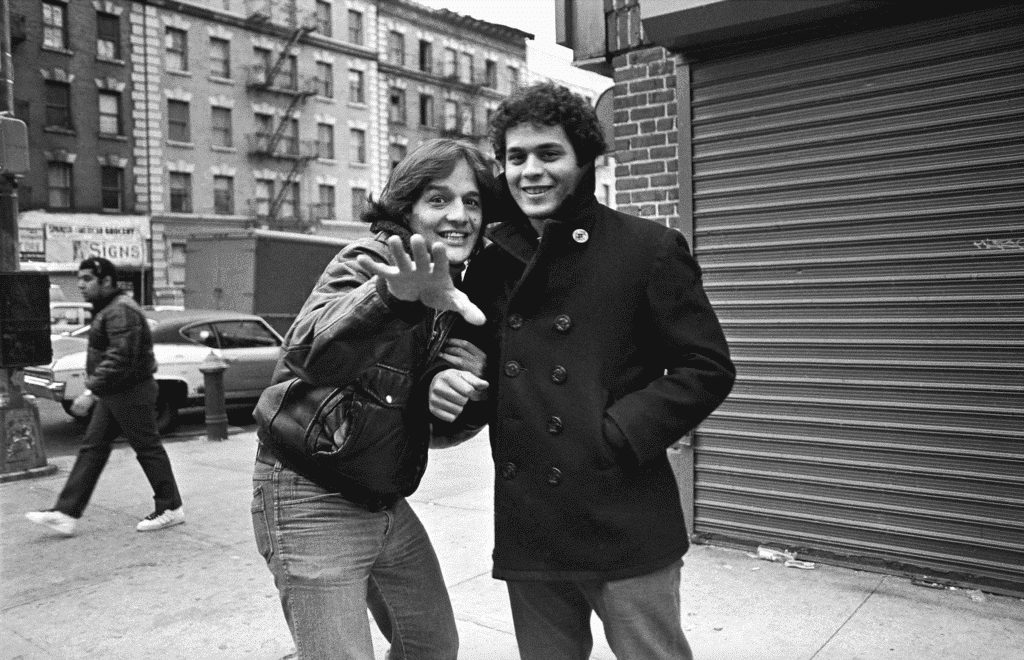
South Bronx Family Album is published by Culture Crush, Inc. and is limited to 500 signed and numbered copies. The book is available for $375.

